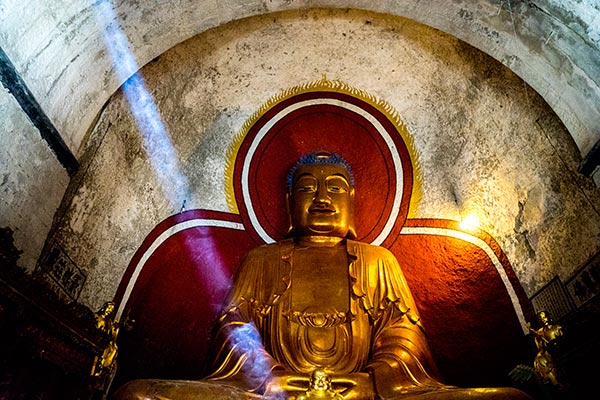Rich tapestry of Buddhist, Taoist and tea traditions
 |
|
The Big Buddha statue inside a grotto in Dafo Temple, Xinchang county, Zhejiang province.[Photo by Zhang Yongxu/For China Daily] |
If you are looking for a one-stop snapshot of China's deep traditions of Buddhism, Taoism and tea culture, Xinchang county in Zhejiang province is the place to go. As an added bonus, visitors will also be able to enjoy the beautiful scenery of its green mountains and deep valleys.
My journey started at Dafo (Big Buddha) Temple, which has a history of more than 1,600 years. It's well-known for its 15-meter high Buddha statue carved inside a grotto, which is the biggest Buddha south of the Yangtze River.
Stepping into the Main Hall, I followed other visitors to view the statue, which was varnished with gold in 1991. As I stood in front of it, a ray of sunshine burst through a small window bathing it in light. I was instantly filled with veneration and couldn't help but admire the skill of the ancient craftsmen.
No matter where you stand and look at the Buddha, it seems that he is smiling at you. His eyes are two triangle-shaped caves, which are big enough for an 8-or 9-year-old child to stand inside. On the back of his head are three wells, so when it rains or snows, the water drains away.
After worshipping the Buddha, my friends and I went to a teahouse inside the temple to have a sip of Dafo Longjing tea. Unlike at other places famous for their tea culture, the local residents like to use glasses rather than porcelain or clay cups for the tea. The green leaves gradually become larger and you can watch them as they swell and fall to the bottom of your glass.
Xinchang is not only the hometown of Dafo Longjing, it also houses the China Tea Market, a major distribution center for Longjing tea. Besides domestic sales, the market exports about 30,000 tons of tea to Europe and Africa every year.














